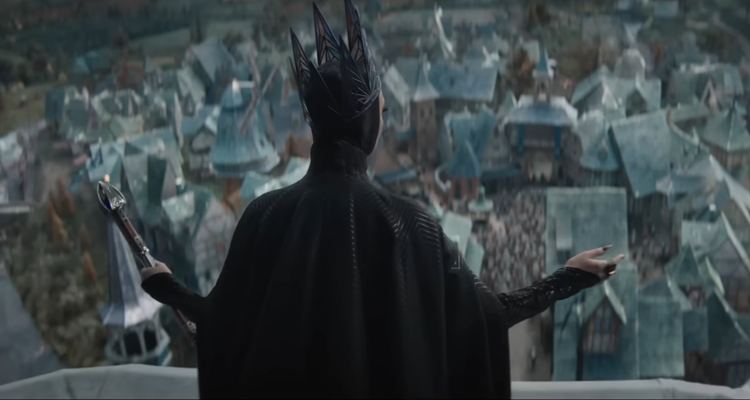Snow White Review: A Hollow Reboot with No Fairytale Spark
Disney’s live-action Snow White promises modern magic but falters with lackluster performances and a story caught between eras.
By attempting to modernize a beloved classic while preserving its fairytale roots, Disney’s Snow White finds itself trapped in a creative identity crisis. What was once a groundbreaking 1937 animated feature has now been reimagined with glossy production, social sensitivity, and a cast designed to reflect today’s push for inclusivity. Yet, despite all the effort, this live-action adaptation ultimately fails to cast a meaningful spell.
Disney’s Fairytale Makeover: A Risky Balancing Act
Bringing Snow White back to life was never going to be simple. The film arrives after years of pandemic-related delays, online backlash over the portrayal of dwarves, and divisive conversations surrounding the film’s casting. Disney, aiming to check every progressive box while honoring the original, faced a daunting challenge: how do you make a nearly century-old tale relevant in 2025 without alienating either traditionalists or modern viewers?
Unfortunately, the result is a muddled production that tries to satisfy everyone and ends up resonating with no one.
Rachel Zegler: A Princess Who Never Quite Reigns
At the center of this updated tale is Rachel Zegler, the breakout star of West Side Story, cast as a reimagined Snow White. Her casting was a clear attempt to break from Disney’s Eurocentric past. While Zegler brings poise and undeniable vocal talent, her performance lacks the enchantment necessary to fully embody a timeless princess.
Rather than infusing the character with depth or freshness, Zegler appears caught between two worlds: the whimsical charm of the original and the independent warrior archetype today’s audiences expect. This dissonance leaves Snow White feeling more like a symbolic gesture than a fully realized heroine.
Gal Gadot’s Evil Queen: Style Over Substance
One would expect Gal Gadot, with her formidable screen presence, to breathe life into the Evil Queen. And in flashes, she does. Draped in imposing costumes and delivering lines with theatrical flair, Gadot has moments of menace and mystique. Yet, the film rarely allows her character to evolve beyond surface-level villainy.
Reduced to sneering and scowling, Gadot’s Queen becomes more of a caricature than a compelling antagonist. A particularly biting line — “And what do you have to offer to your subjects? Dessert?” — hints at the sardonic wit the film could’ve leaned into. Instead, that spark is quickly dimmed by a script more concerned with moral positioning than dynamic storytelling.
A Prince-less Plot and a Forgettable Jonathan
In this version, there is no traditional prince. Enter Jonathan, played by Andrew Burnap — a Robin Hood-style rebel leading a band of merry outlaws loyal to Snow White’s late father. Theoretically, this should allow for a more grounded, feminist narrative, but Jonathan’s character is so underwritten that he fades into the background.
Burnap’s performance, perhaps intentionally subdued to give Snow White more narrative space, feels like filler. Their relationship lacks chemistry, making the emotional payoff of the story’s climax feel unearned.
CGI Dwarves and the Art of Playing It Safe
To sidestep controversy, Disney replaced traditional dwarf characters with CGI creations driven by motion capture. Visually, they’re passable — expressive enough to avoid being creepy, but lacking the distinct personalities that made the original seven so beloved.
The relationship between Snow White and the dwarves, once the emotional heart of the tale, is barely explored. Their scenes are reduced to brief interactions, robbing the story of the warmth and camaraderie it needs.
Magic Mirror, Stale Reflection
While the film sticks loosely to its source material — poisoned apple, enchanted slumber, jealous queen — the tone is erratic. Marc Webb, best known for The Amazing Spider-Man 2, directs with a cautious hand, seemingly unsure whether to embrace spectacle or subversion.
What could’ve been a bold reimagining is watered down by narrative indecision. Instead of challenging the fairytale formula or fully embracing nostalgia, Snow White settles for the safe middle. It’s as if the film is afraid to make a statement that might stir the pot — a surprising stance for a studio often accused of over-correcting.
Cultural Crossfire and Studio Caution
Beyond the screen, the film’s journey has been fraught. Zegler’s public political stances — particularly her support for Palestine — and Gadot’s ties to Israel became focal points in a broader online culture war. This backdrop only intensified scrutiny, turning a Disney reboot into a symbol of ideological tug-of-war.
To its credit, Disney doesn’t directly shy away from modern themes. Snow White is no longer a passive damsel. She leads, makes decisions, and challenges power. But these updates feel more like corporate mandates than character-driven progressions.
A modern Snow White doesn’t need to be a feminist manifesto — it just needs to be a good story, told well. And that’s where this version loses the plot.
The Verdict: A Mirror That Reflects Confusion
Ultimately, Snow White 2025 is a film that forgets the magic lies not in grand reinvention, but in honest storytelling. Despite its noble ambitions, the film plays it so safe that it ends up hollow — a tale as old as time, told without conviction.
Rachel Zegler and Gal Gadot do what they can, but the script doesn’t give them enough to work with. Instead of offering a bold new vision or a loving homage, Disney delivers a film that looks beautiful but feels emotionally empty.
Audiences expecting either a stirring modern parable or a nostalgic escape will find themselves disappointed. In trying to do both, Snow White does neither.
Snow White could have been a timely reinvention of a fairytale icon. Instead, it settles for a glossy surface and diluted themes, afraid to take meaningful risks or embrace the heart of what made the original special. It’s a story trapped between mirrors — one reflecting nostalgia, the other reflecting the demands of modernity — and neither one showing anything truly magical.
(Disclaimer: This review is a critical interpretation intended for informational and editorial purposes. All opinions expressed are those of the writer, based on publicly available content and artistic analysis.)
Also Read: Chainsaw Man Chapter 197: Release Date, Time, and What to Expect











